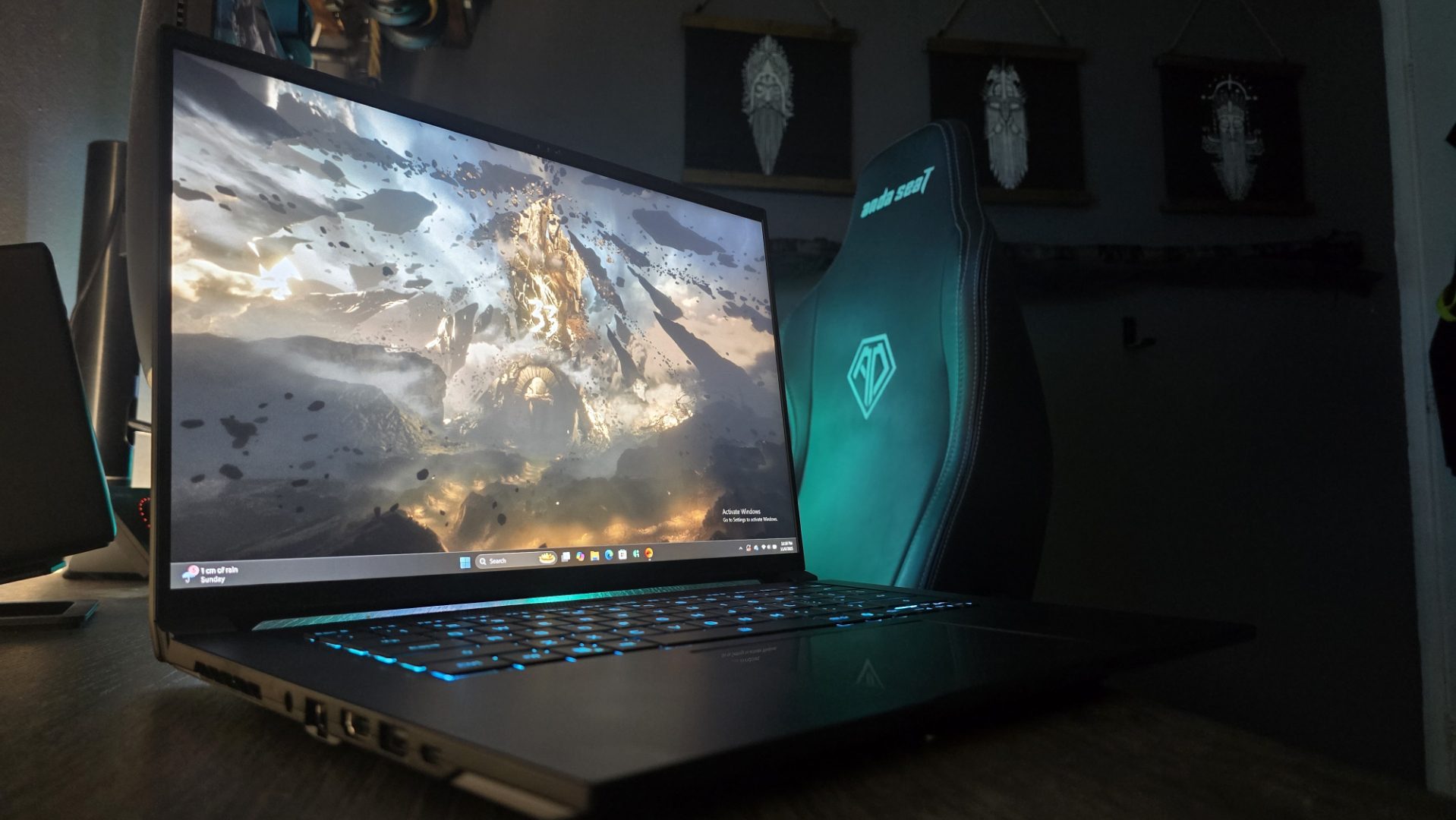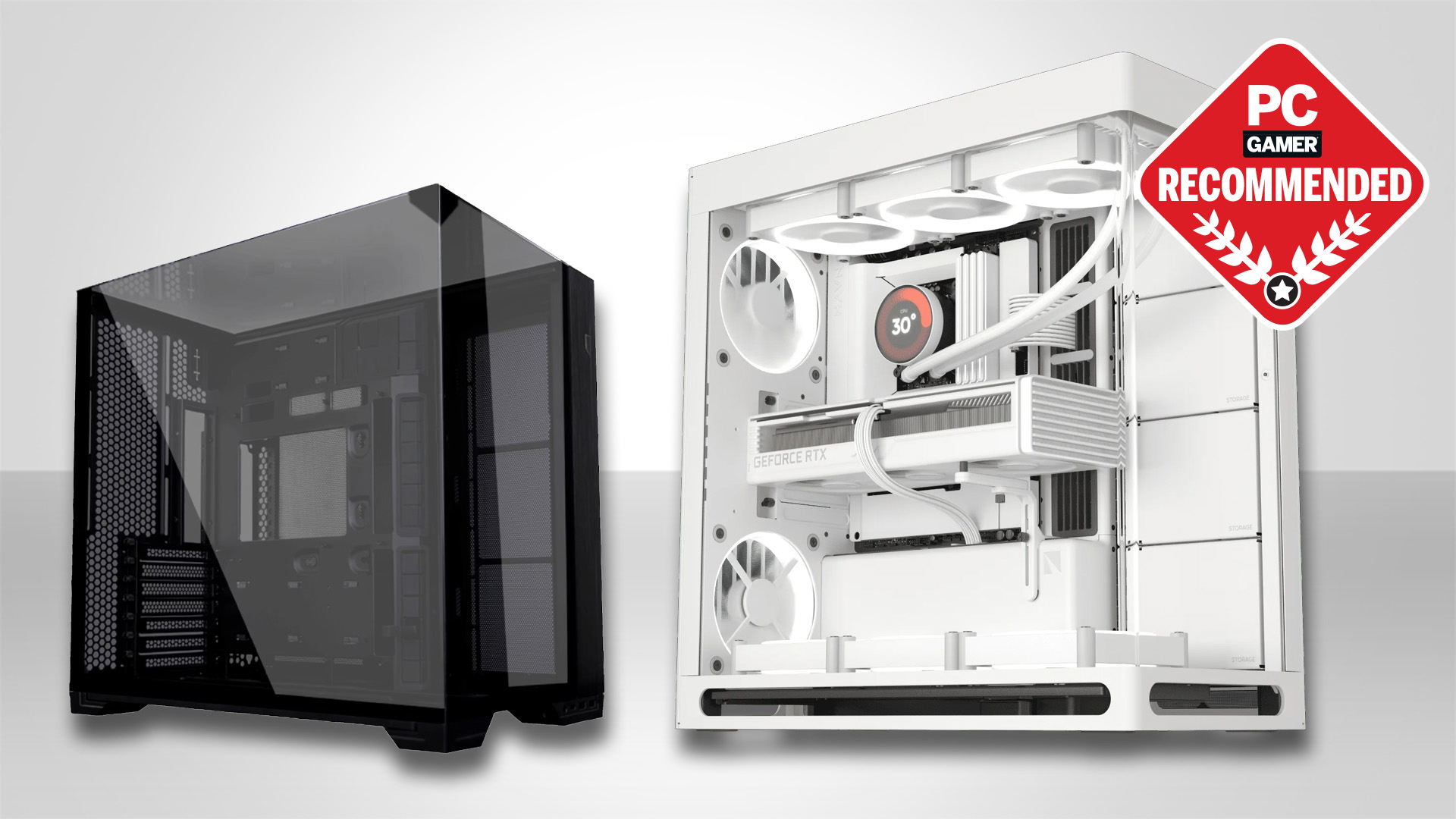Our Verdict
Although it touts an epic design language and a beautiful color-accurate display, its underwhelming GPU and middling storage performance leave a lot to be desired.
For
- Outstanding build quality
- Crisp IPS display
- Priced aggressively
Against
- 85 W RTX 5070 must be a joke
- SSD speeds are well below par
- Cheaper Gigabyte models outclass it
PC Gamer's got your back
I don't understand Gigabyte's Aero X16, I really don't. Actually, scratch that, I don't currently understand the wider gaming notebook market. Not right now anyway. I've combed over the test results here repeatedly over the last week, and well, to say this isn't the best gaming laptop, is an understatement. Quite the damning opening paragraph that, especially as a hardware journalist with a reputation to uphold and all, but here me out. I've got beef, and it's with TGP, or total graphics power.
This here is the Gigabyte Aero X16 Copilot. A quick glance down the specs list, and you'll see it's brimming with some seriously impressive hardware, or so it would seem anyway. There's one of AMD's latest Ryzen AI 7 350 CPUs based on the Krackan Point architecture, a healthy dose of 32 GB DDR5 clocking in at 5,600 MT/s, a nice 1 TB helping of PCIe 4.0 SSD storage, and perhaps more importantly for this whimsical argument, an RTX 5070 8 GB mobile GPU. But there's a catch: it's limited to just 85 W.
That's the same 85 W power limit Gigabyte placed on its Gaming A16 I tested earlier this year as well, with its RTX 5060. The same 85 W limit, which I berated as being the primary culprit as to why that specific breed of 16-inch gaming notebook failed to keep up with the likes of Lenovo's much more potent LOQ 15 Gen 10. And here it is, rearing its ugly head up once more, but this time strapped to one of Blackwell's finest RTX 5070 cards instead, a GPU whose desktop equivalent is designed to top out at 250 W of power, with the mobile one theoretically limited to 100 W (at least if the manufacturer doesn't have other plans). Oh, it can't be that bad, can it? I hear you ask. Well, dear reader. Yes, it really is.
Side-by-side comparison first, let's compare it to that Gigabyte Gaming A16. Both feature 32 GB of DDR5, both have a 1 TB SSD, both have a 16-inch display (albeit at slightly different resolutions), and they both have similarly impressive CPU setups (The A16 with the older Core i7 13620H, and the Aero with the aforementioned AMD unit). The difference, of course, is that RTX 5070 GPU and a $100 price bump for the Aero as a result.
Model No | 1WH93USC64AH |
CPU | AMD Ryzen AI 7 350 |
GPU | Nvidia RTX 5070 85 W |
RAM | 32 GB DDR5-5600 |
Storage | 1 TB PCIe 4.0 SSD |
Screen Size | 16-inch IPS |
Refresh Rate | 165 Hz |
Resolution | 2560x1600 |
Battery | 76 Whr |
Dimensions | 16.75 ~ 19.99 x 355 x 250.7 mm | 0.78 x 13.97 x 9.87 inches |
Weight | 1.9 kg | 4.18 lbs |
Price | $1,400 | £1,383 |
✅ Form's more important than function: Its performance flaws are only noticeable when compared to other products at this price point. If you value its sleek, professional aesthetic and capable spec, it's still a solid pick.
❌ You're looking for the best value possible: Confusing graphics card shenanigans aside, storage is still underwhelming, and the CPU performance is lagging behind compared to similarly priced products.
Click through to check out the full in-depth Gigabyte Aero X16 benchmark numbers.
For that $100 extra, you get "improved" gaming performance that is savagely average. At 1080p, in Cyberpunk, the A16 clocks 33 fps, the Aero 32 fps. In Baldur's Gate 3, the A16, 65 fps, the Aero 63 fps. Black Myth Wukong, the Aero eekes out a win with 53 fps to 52 fps, and the final two titles, miraculously, the Aero wins out (I suspect thanks to AMD's newer CPU optimizations beating out the older Intel chip), nailing 60 fps versus 50 fps in F1 24, and 66 fps in Metro Exodus to the X16's 59 fps. Overall, that's an average performance improvement of just 5.7% for the next step up in GPU. Does that seem right to you? Because it sure as hell doesn't to me. To be clear, that RTX 5060 in the Lenovo LOQ outpaces it on average, and that's all because of the TGP being far more generous.
Still, there's more to the Aero than that. Let's not get too hung up on crappy GPU advertising strategies here. There's no denying that this thing is stunning. It's bridging that gap between potent gaming notebook and professional office machine that you can take to your weekly "push-the-needle" seminar without looking like too much of a nerd. The aesthetic is remarkably clean. There are no edgy engraved lines or outrageous illuminated logos. Bezels are thin, the screen is beautifully crisp at 16-inches with a 2560x1600 resolution, and although you do get that gamer font on the keyswitches, the metallic satin chassis looks like it just fell off the back of a Porsche Taycan production line.
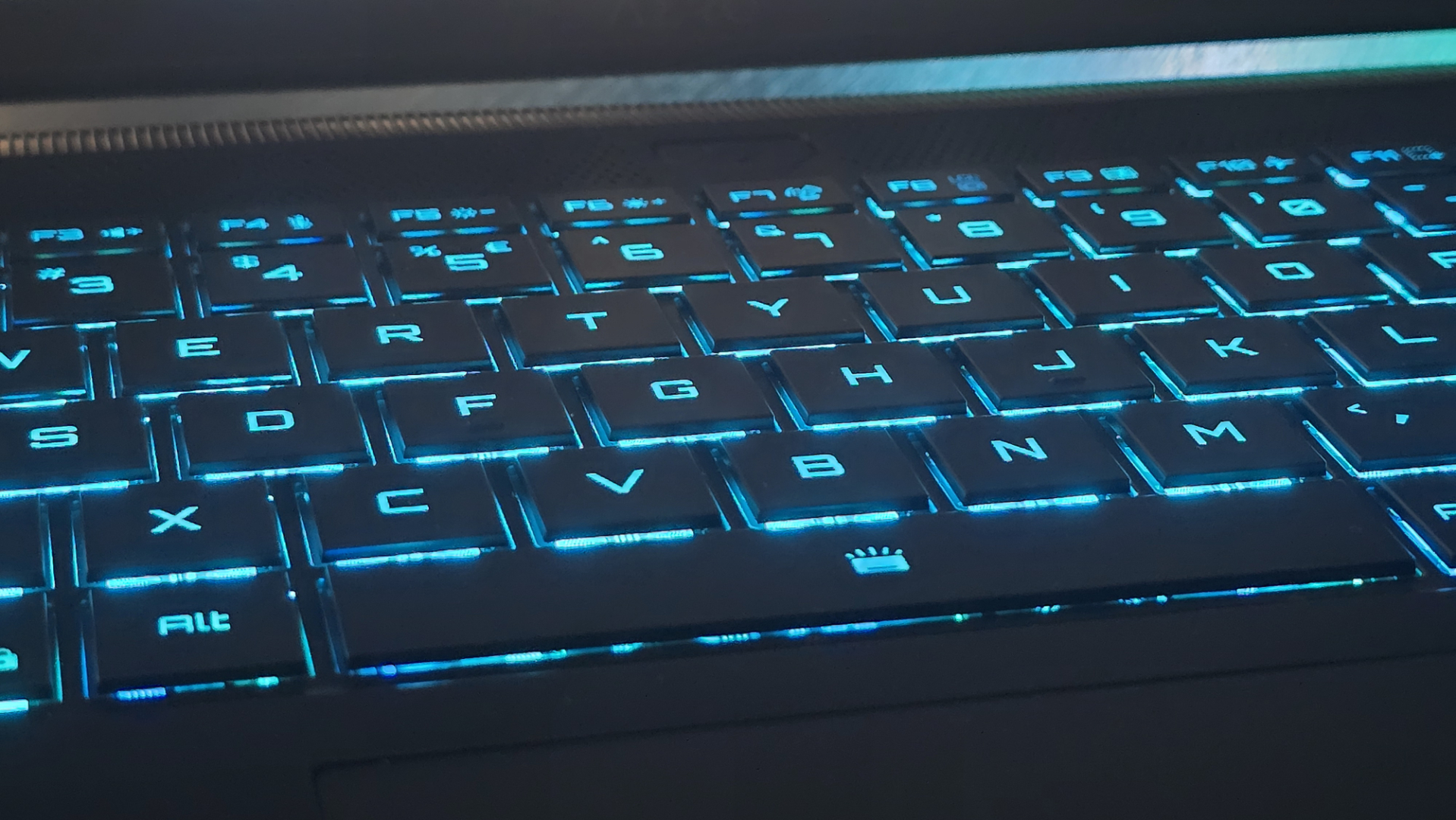
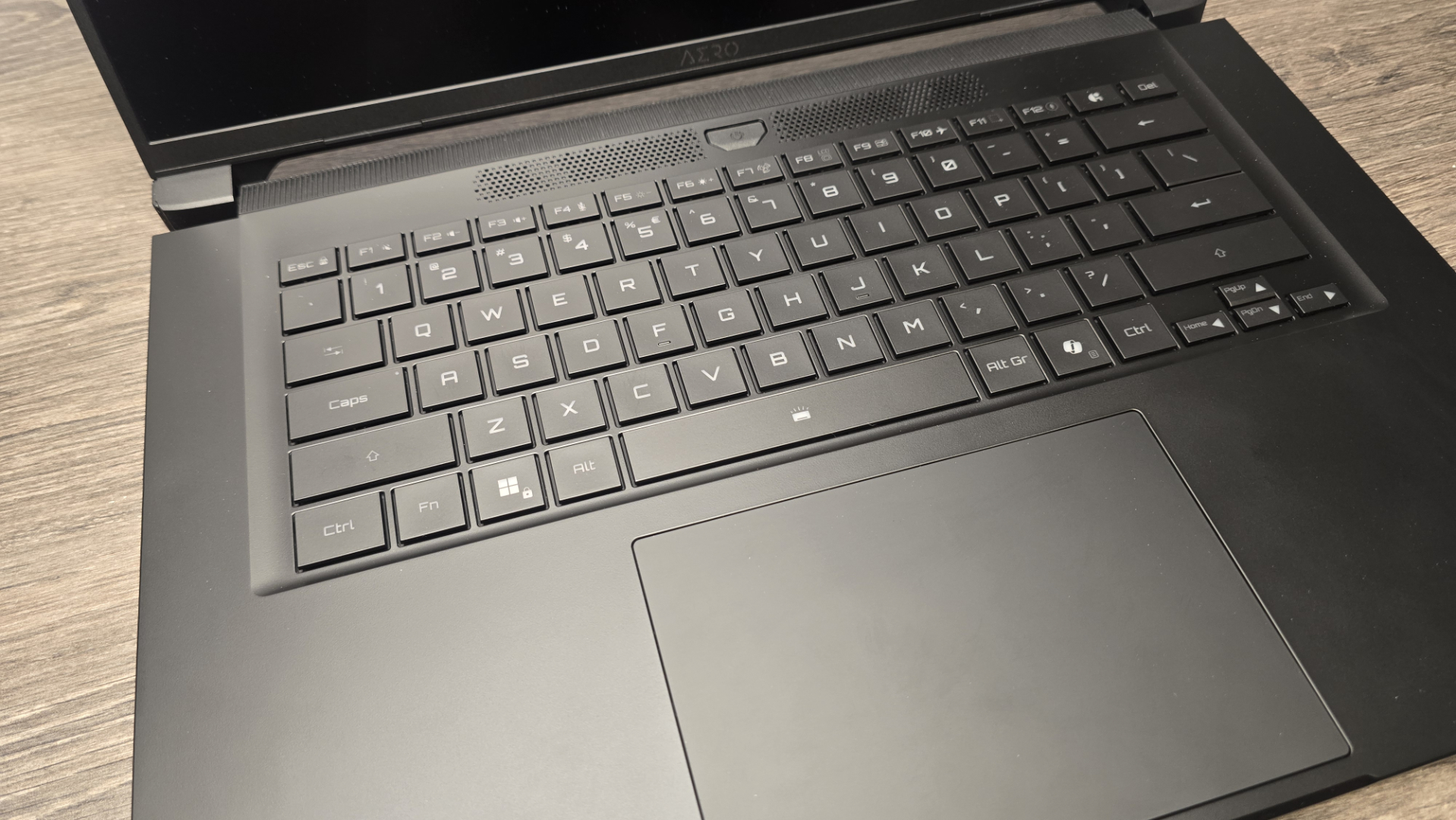
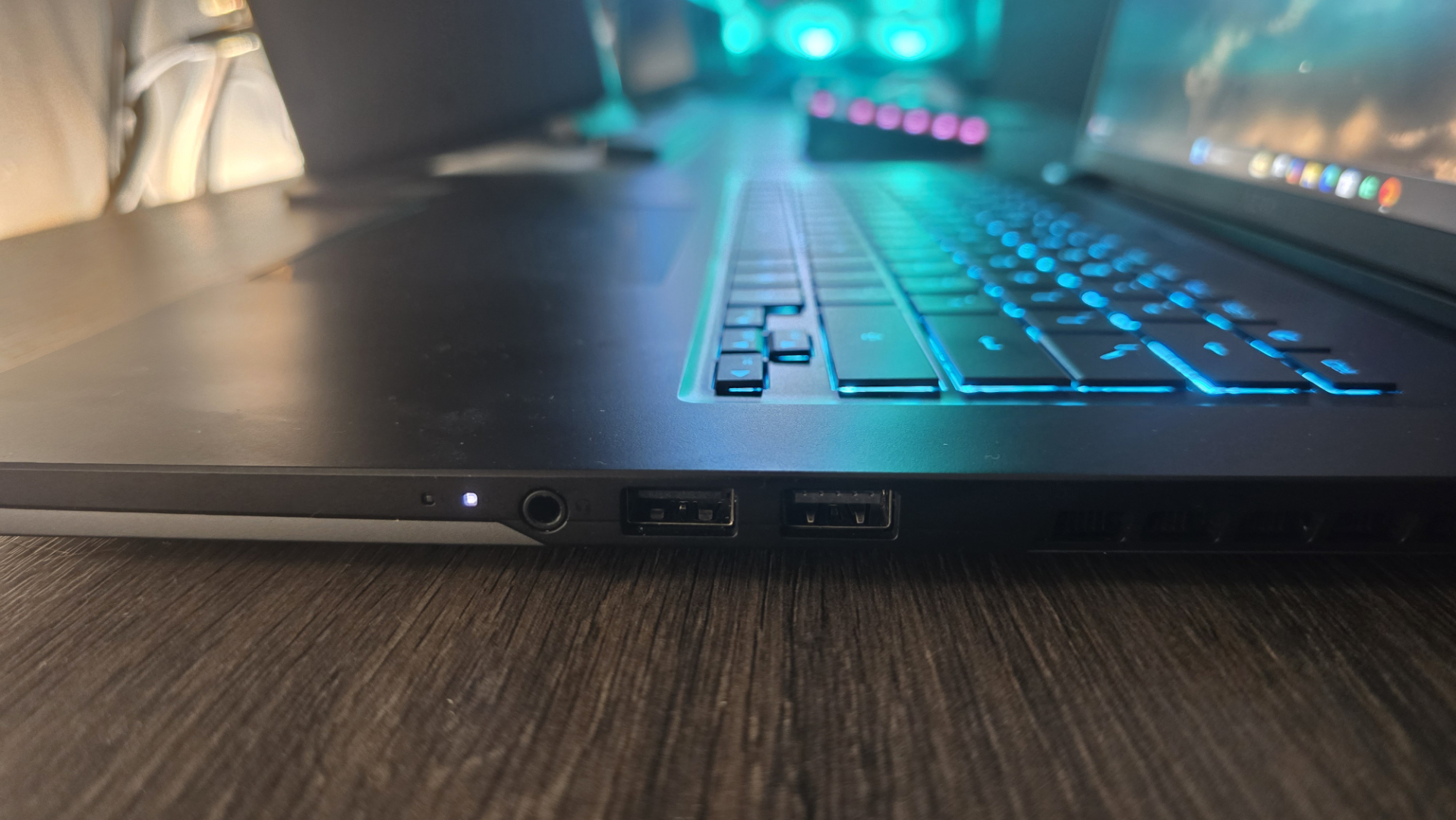
The keyboard's not exactly anything to write home about, but it's comfortable to type on, backlit, and there's plenty of travel and a subtle actuation to it that provides you with a healthy dose of tactile feedback. Port complement is plentiful, too, and the speakers are surprisingly good, given it's a laptop.
Keep up to date with the most important stories and the best deals, as picked by the PC Gamer team.
Right, now we've got that out of the way, let's get back to the negatives in this upside-down compliment sandwich. Namely, the rest of the performance… yay. First up, SSD. It's a Kingston OM8PGP41024Q-A0. It's a PCIe 4.0 drive, at 1 TB, and, well, it is not good; it's by far the slowest drive I've tested to date, with nearly half the performance of the Gigabyte AG450E found inside of the Gaming A16. Then there's the CPU, and that too, although relatively impressive on multi-core, performs abysmally in single-core tests, averaging just 78 points in Cinebench.
It does pick things up a touch in Blender, but it's still not going to compete compared to something like its desktop equivalents, and given its main competition comes in the form of a three-year-old dubious Intel chip, well, I expected better.
Moving on, battery life was, although not remarkably low, disappointing, certainly compared to the A16, as it managed only 109 minutes, compared to its cousin's 183, and image generation too was solid, although again it struggled compared to the far better fed RTX 5060 found in the Lenovo LOQ.
The one saving grace is that, thanks to a far more formidable ray tracing and Tensor core setup compared to that RTX 5060 line in the Gaming A16, it does tap into better ray tracing and DLSS 4 upscaling performance. And that's seriously helpful when you're gaming at that 2560x1600 native res.



Well, well, well, how do we sum all this up then? In the grand scheme of things, the Aero X16 isn't going to win many accolades here. It's certainly not going to make our best gaming laptop list. It's just not. The crippling effect of that 85 W TGP is rather astonishing. The fact that it can't even keep up with Gigabyte's own cheaper models with lesser GPUs is not exactly ideal, particularly as it's such a key selling point. Now, yes, there is a more modern CPU here, optimized for AI of course (although really comparing those NPUs to a dedicated GPU on AI performance is like sewing with a broken needle: pointless), and yes, there's a higher-resolution screen here too, but is that really enough to justify the absolute confusion ensuing from this cacophony of TGP nonsense? I'm not so sure.
It's a beautiful thing. It is. Alright, the SSD's a bit sub-par and the CPU performance is middling, but the build quality, the design, the software, it's all up there. It's just a shame that we have to deal with this TGP nonsense; otherwise, this could've been something truly incredible.
Although it touts an epic design language and a beautiful color-accurate display, its underwhelming GPU and middling storage performance leave a lot to be desired.
After graduating from the University of Derby in 2014, Zak joined the PC Format and Maximum PC team as its resident staff writer. Specializing in PC building, and all forms of hardware and componentry, he soon worked his way up to editor-in-chief, leading the publication through the covid dark times. Since then, he’s dabbled in PR, working for Corsair for a while as its UK PR specialist, before returning to the fold as a tech journalist once again.
He now operates as a freelance tech editor, writing for all manner of publications, including PC Gamer, Maximum PC, Techradar, Gamesradar, PCGamesN, and Trusted Reviews as well. If there’s something happening in the tech industry it’s highly likely Zak has a strong opinion on it.
You must confirm your public display name before commenting
Please logout and then login again, you will then be prompted to enter your display name.
